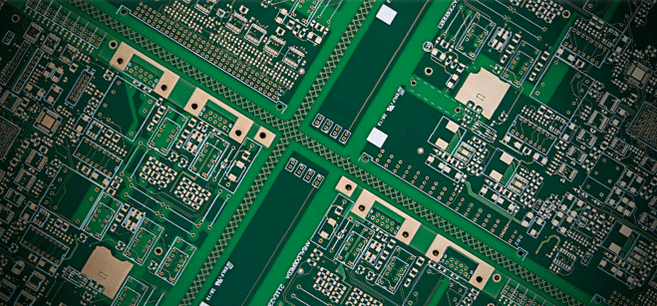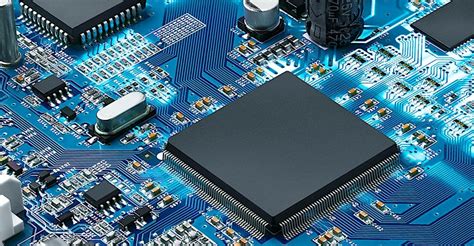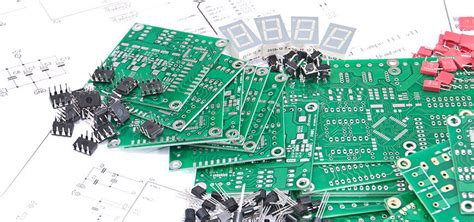Flex pcb stiffener material
Benefits Of Using Polyimide As A Flex PCB Stiffener Material
Polyimide has emerged as a highly advantageous material for use as a flex PCB stiffener, offering a range of benefits that enhance the performance and reliability of flexible printed circuit boards.
One of the primary advantages of polyimide is its exceptional thermal stability.
This material can withstand high temperatures without degrading, making it ideal for applications that involve significant thermal cycling or exposure to extreme heat. Consequently, polyimide stiffeners ensure that the flex PCB maintains its structural integrity and functionality even under demanding thermal conditions.
In addition to its thermal stability, polyimide exhibits excellent mechanical properties.
It provides the necessary rigidity to specific areas of the flex PCB, thereby preventing excessive bending or flexing that could lead to mechanical failure. This rigidity is particularly crucial in regions where connectors or components are mounted, as it ensures reliable electrical connections and reduces the risk of damage during handling or operation. Furthermore, polyimide’s mechanical strength does not compromise the overall flexibility of the PCB, allowing for a balanced combination of rigidity and flexibility that is essential for many modern electronic applications.
Another significant benefit of using polyimide as a flex PCB stiffener material is its outstanding chemical resistance.
Polyimide is highly resistant to a wide range of chemicals, including solvents, acids, and bases, which are commonly encountered in various industrial and manufacturing environments. This chemical resistance ensures that the flex PCB remains unaffected by exposure to potentially harmful substances, thereby extending its operational lifespan and maintaining its performance over time. Additionally, polyimide’s resistance to moisture absorption further enhances its durability, as it prevents the material from swelling or degrading in humid conditions.
Moreover, polyimide is known for its excellent electrical insulating properties.
This characteristic is particularly important in applications where electrical isolation is critical to prevent short circuits or interference between different circuit layers. By using polyimide as a stiffener, manufacturers can ensure that the flex PCB maintains high insulation resistance, thereby enhancing the overall reliability and safety of the electronic device. The material’s low dielectric constant also contributes to improved signal integrity, which is essential for high-speed and high-frequency applications.
Furthermore, polyimide is compatible with a wide range of fabrication processes, making it a versatile choice for flex PCB stiffeners.
It can be easily laminated, drilled, and etched, allowing for precise and efficient manufacturing. This compatibility with standard PCB fabrication techniques ensures that incorporating polyimide stiffeners does not introduce significant complexity or cost to the production process. Additionally, polyimide’s compatibility with various adhesive systems ensures strong bonding with the flex PCB substrate, further enhancing the mechanical stability and reliability of the final product.
In conclusion, the use of polyimide as a flex PCB stiffener material offers numerous benefits that contribute to the enhanced performance, reliability, and durability of flexible printed circuit boards. Its exceptional thermal stability, mechanical strength, chemical resistance, electrical insulating properties, and compatibility with standard fabrication processes make it an ideal choice for a wide range of applications. By leveraging these advantages, manufacturers can produce flex PCBs that meet the demanding requirements of modern electronic devices, ensuring optimal functionality and longevity.

Comparing FR4 And Polyimide Stiffeners In Flex PCBs
When designing flexible printed circuit boards (flex PCBs), the choice of stiffener material is a critical consideration that can significantly impact the performance and reliability of the final product. Two of the most commonly used stiffener materials in flex PCBs are FR4 and polyimide. Each material offers distinct advantages and disadvantages, making it essential to understand their properties and applications to make an informed decision.
FR4, a composite material made of woven fiberglass cloth with an epoxy resin binder, is widely recognized for its mechanical strength and stability.
It is a popular choice in rigid PCBs due to its excellent thermal resistance and electrical insulation properties. When used as a stiffener in flex PCBs, FR4 provides robust support, ensuring that the flexible areas of the circuit remain flat and stable during assembly and operation. This rigidity is particularly beneficial in applications where the flex PCB must interface with connectors or other components that require a stable, flat surface.
However, the rigidity of FR4 can also be a drawback in certain applications.
The inherent stiffness of FR4 can limit the flexibility of the PCB, making it less suitable for designs that require frequent bending or dynamic movement. Additionally, the thickness of FR4 stiffeners can add to the overall profile of the flex PCB, which may be a concern in space-constrained applications. Despite these limitations, FR4 remains a cost-effective and reliable choice for many flex PCB designs, particularly those that do not require extensive bending.
In contrast, polyimide stiffeners offer a different set of advantages that make them suitable for more dynamic applications.
Polyimide is a high-performance polymer known for its exceptional flexibility, thermal stability, and chemical resistance. When used as a stiffener in flex PCBs, polyimide provides the necessary support while maintaining the overall flexibility of the circuit. This makes polyimide stiffeners ideal for applications that involve continuous or repeated bending, such as wearable electronics, medical devices, and flexible displays.

Moreover, polyimide stiffeners are typically thinner than FR4 stiffeners, which can be advantageous in designs where space is at a premium.
The thin profile of polyimide stiffeners allows for more compact and lightweight flex PCB designs, which is particularly important in portable and miniaturized electronic devices. However, the increased flexibility of polyimide can also be a disadvantage in applications that require a high degree of rigidity and support. In such cases, the use of polyimide stiffeners may not provide the necessary stability, leading to potential issues during assembly or operation.
In summary, the choice between FR4 and polyimide stiffeners in flex PCBs depends largely on the specific requirements of the application. FR4 stiffeners offer superior mechanical strength and stability, making them suitable for applications that require a flat, rigid surface. On the other hand, polyimide stiffeners provide greater flexibility and a thinner profile, making them ideal for dynamic applications and space-constrained designs. By carefully considering the properties and limitations of each material, designers can select the most appropriate stiffener to ensure the optimal performance and reliability of their flex PCB.
How To Choose The Right Stiffener Material For Your Flex PCB Design
When designing a flexible printed circuit board (flex PCB), selecting the appropriate stiffener material is a critical decision that can significantly impact the performance, durability, and manufacturability of the final product. The stiffener material provides mechanical support to specific areas of the flex PCB, ensuring that these regions maintain their shape and integrity during assembly and operation. To make an informed choice, several factors must be considered, including the application requirements, material properties, and cost implications.
First and foremost, understanding the specific application requirements is essential.
Flex PCBs are often used in environments where space constraints and mechanical flexibility are paramount, such as in wearable devices, medical equipment, and aerospace applications. In these scenarios, the stiffener material must provide adequate support without compromising the flexibility of the overall design. For instance, if the flex PCB is subject to frequent bending or movement, a more flexible stiffener material like polyimide may be appropriate. Polyimide is known for its excellent thermal stability, chemical resistance, and mechanical properties, making it a popular choice for many flex PCB applications.
Conversely, if the flex PCB is intended for use in a static environment where rigidity is more critical, a stiffer material such as FR-4 or stainless steel may be more suitable.
FR-4, a glass-reinforced epoxy laminate, offers high mechanical strength and dimensional stability, making it ideal for applications requiring robust support. Stainless steel, on the other hand, provides exceptional rigidity and durability, albeit at a higher cost and weight. Therefore, the choice between these materials should be guided by the specific mechanical and environmental demands of the application.
In addition to application requirements, the properties of the stiffener material itself must be carefully evaluated.
Key properties to consider include thermal conductivity, coefficient of thermal expansion (CTE), and dielectric properties. For example, in high-temperature applications, a stiffener material with low thermal conductivity and a low CTE is desirable to minimize thermal stress and ensure reliable performance. Polyimide, with its low CTE and excellent thermal stability, is often preferred in such cases. On the other hand, FR-4, while offering good mechanical properties, has a higher CTE, which may lead to thermal mismatch issues in certain applications.
Cost is another crucial factor in the selection process.
While high-performance materials like polyimide and stainless steel offer superior properties, they also come at a higher cost. Therefore, it is important to balance performance requirements with budget constraints. In some cases, a combination of materials may be used to optimize both performance and cost. For example, a flex PCB may incorporate a polyimide stiffener in critical areas requiring high flexibility and an FR-4 stiffener in regions where rigidity is more important.
Furthermore, manufacturability should not be overlooked.
The chosen stiffener material must be compatible with standard PCB manufacturing processes to ensure efficient production and assembly. Materials that are difficult to process or require specialized equipment can increase production time and costs. Therefore, it is advisable to consult with PCB manufacturers during the design phase to ensure that the selected stiffener material can be seamlessly integrated into the manufacturing workflow.
In conclusion, choosing the right stiffener material for a flex PCB design involves a careful consideration of application requirements, material properties, cost, and manufacturability. By thoroughly evaluating these factors, designers can select a stiffener material that not only meets the performance demands of the application but also aligns with budgetary and production constraints. This holistic approach ensures the development of reliable, high-quality flex PCBs that perform optimally in their intended applications.

The Role Of Stiffener Materials In Enhancing Flex PCB Durability
In the realm of modern electronics, the demand for flexible printed circuit boards (FPCBs) has surged, driven by the need for compact, lightweight, and versatile electronic devices. These flexible circuits offer numerous advantages, including the ability to bend and fold, which is particularly beneficial in applications where space constraints and dynamic movement are critical.
However, the inherent flexibility of FPCBs can also pose challenges in terms of durability and mechanical stability. This is where stiffener materials come into play, playing a crucial role in enhancing the durability and performance of flex PCBs.
Stiffener materials are typically added to specific areas of a flexible circuit to provide additional support and rigidity.
These materials are essential in applications where the FPCB is subjected to repeated bending, mechanical stress, or where components need to be mounted securely. By reinforcing certain sections of the flexible circuit, stiffeners help prevent damage, such as cracking or delamination, which can occur due to mechanical strain. Consequently, the use of stiffener materials extends the lifespan of the FPCB and ensures reliable performance in demanding environments.
One of the most commonly used stiffener materials is polyimide,
a high-performance polymer known for its excellent thermal stability, mechanical strength, and chemical resistance.
Polyimide stiffeners are particularly advantageous because they can withstand high temperatures, making them suitable for applications that involve soldering or exposure to harsh operating conditions. Additionally, polyimide’s flexibility allows it to conform to the shape of the FPCB, providing support without compromising the board’s overall flexibility.
Another widely used stiffener material is FR-4, a composite material made of woven fiberglass cloth with an epoxy resin binder.
FR-4 stiffeners are valued for their rigidity and strength, making them ideal for applications where maximum support is required. However, unlike polyimide, FR-4 is not flexible, which means it is typically used in areas of the FPCB that do not require bending. The choice between polyimide and FR-4 stiffeners depends on the specific requirements of the application, including the need for flexibility, thermal performance, and mechanical support.
In addition to polyimide and FR-4, other materials such as stainless steel and aluminum are also used as stiffeners in certain applications.
These metal stiffeners offer superior mechanical strength and are often employed in scenarios where extreme durability is necessary. However, the use of metal stiffeners can add weight and may affect the overall flexibility of the FPCB, so their application is generally limited to specific use cases where their benefits outweigh these drawbacks.
The integration of stiffener materials into flex PCBs is a critical design consideration that requires careful planning and precision.
Engineers must evaluate the mechanical and thermal requirements of the application, as well as the specific areas of the FPCB that need reinforcement. By strategically placing stiffeners, they can optimize the balance between flexibility and rigidity, ensuring that the FPCB can withstand mechanical stresses while maintaining its functional integrity.
In conclusion, stiffener materials play an indispensable role in enhancing the durability and performance of flexible printed circuit boards. By providing additional support and rigidity, these materials help prevent damage and extend the lifespan of FPCBs in various applications. The choice of stiffener material, whether polyimide, FR-4, or metal, depends on the specific needs of the application, including flexibility, thermal performance, and mechanical strength. As the demand for flexible electronics continues to grow, the importance of stiffener materials in ensuring the reliability and longevity of flex PCBs cannot be overstated.






